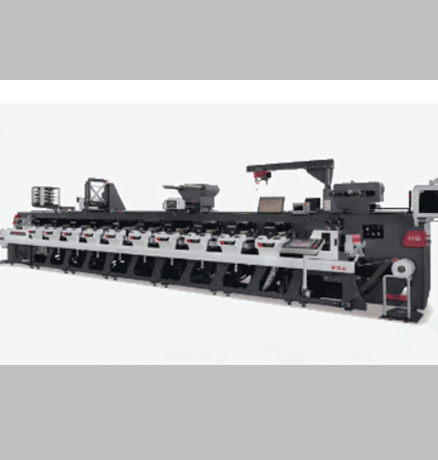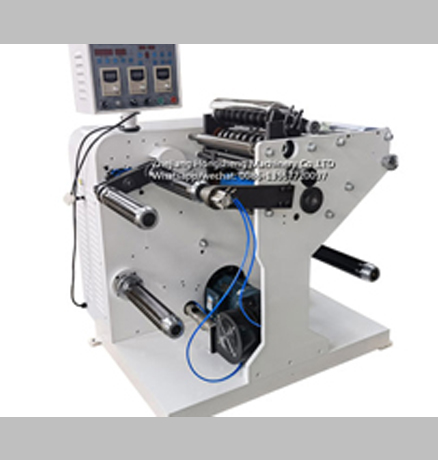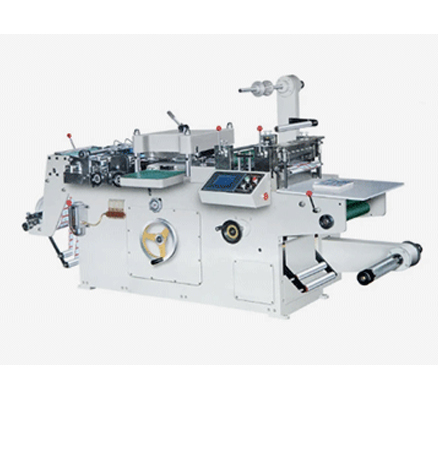In the modern manufacturing realm, die cutting machines play a crucial role. This article comprehensively explores their essence, functions, and significance, shedding light on their multiple aspects.A die - cutting machine is a vital tool in the manufacturing and production industries. It's like a precision - engineered cutter that shapes materials with remarkable accuracy.

1. The Basics
Definition: A die - cutting machine is a mechanical device designed to cut materials into specific shapes. It uses a die, a custom - made tool with a sharp - edged pattern, to apply pressure and cut through materials such as paper, cardboard, plastic, rubber, and even some metals.
Function: The primary function is to create identical and complex shapes in a repetitive manner. For example, it can produce hundreds or thousands of the same product labels, packaging components, or gaskets in a short time.
2. Working Principle
Die and Material Placement: The material to be cut is placed on a flat or moving surface, depending on the type of die - cutting machine. The die, which is usually made of steel or other hard metals, is mounted above the material.
Cutting Action: When the machine is activated, a force - generating mechanism (hydraulic, mechanical, or pneumatic) presses the die onto the material. The sharp edges of the die penetrate the material and cut it according to the pre - designed shape. The cut - out shapes are then separated from the rest of the material.
Example: In a packaging factory, when making a box - shaped packaging, the die - cutting machine uses a die with the shape of the box (including flaps and folds) to cut the cardboard into the exact shape needed for the box.
3. Types of Die - Cutting Machines
●Flat - Bed Die - Cutting Machines:
Structure: These machines have a flat bed where the material lies stationary. The die is mounted on a press that moves up and down.
Advantages: They are excellent for cutting thick and rigid materials. They provide high precision and are suitable for jobs that require detailed and accurate cuts, like cutting heavy - duty cardboard for high - end product boxes.
Applications: Commonly used in the packaging and printing industries for making boxes, book covers, and large - format printed materials.
●Rotary Die - Cutting Machines:
Structure: Here, the die is in the form of a rotating cylinder. The material is continuously fed through the machine and is cut as the die rotates.
Advantages: They are known for their high - speed operation and are ideal for mass - production. They can handle long - roll materials and produce a large number of cut pieces in a short time.
Applications: Widely used in the label - printing industry to produce labels, stickers, and flexible packaging materials such as plastic bags and wrappers.
●Clicker Die - Cutting Machines:
Structure: These machines have a smaller working area and a more focused cutting mechanism. They usually have a single - stroke press.
Advantages: They offer high precision for cutting small - to medium - sized pieces. They are great for cutting materials like leather and fabric, where detailed and accurate cuts are needed for products like shoes and handbags.
Applications: Used in the footwear, leather goods, and textile industries for cutting components such as shoe uppers, leather patches, and fabric pieces for clothing and accessories.
4. Applications in Different Industries
●Packaging Industry:
Box Making: Die - cutting machines are used to cut cardboard into box shapes, including the main body, flaps, and inserts. They ensure that boxes have accurate dimensions and proper folding lines for easy assembly.
Product Inserts and Sleeves: For creating product inserts that hold and protect the items inside a package and sleeves that give a product a more attractive look.
●Printing and Graphic Arts:
Label Production: To cut printed labels from a roll of label material. The machine can cut around the printed graphics precisely, giving the labels a clean and professional look.
Business Cards and Greeting Cards: Die - cutting can be used to create unique shapes for business cards and greeting cards, adding a creative touch to the printed products.
●Automotive and Aerospace:
Gasket and Seal Production: In the automotive and aerospace industries, die - cutting machines are used to produce gaskets and seals. The precise cutting ensures that these components fit perfectly and prevent leaks and other issues.
Interior Trim and Insulation: For cutting materials used for interior trim, such as carpets and seat covers, and insulation materials to ensure proper fit and function.
●Textile and Apparel:
Fabric Cutting: Die - cutting machines can cut fabric into shapes for clothing components like collars, cuffs, and patches. They can also cut multiple layers of fabric at once, increasing production efficiency.
Accessory Production: In the production of accessories like belts, bags, and hats, die - cutting machines are used to cut the materials into the desired shapes.
5. Advantages and Disadvantages
Advantages:
Precision: The ability to produce highly accurate and consistent cuts is a major advantage. This is crucial for products that require a tight fit or a specific shape, like automotive parts and high - end packaging.
Versatility: Die - cutting machines can handle a wide range of materials and can be used to create a vast array of shapes, from simple geometric shapes to complex, custom - designed patterns.
Efficiency: They can significantly increase production speed, especially in mass - production scenarios. A well - operated die - cutting machine can produce a large number of products in a short amount of time.
Customization: The ability to create custom - made dies allows for unique and personalized product designs. Manufacturers can easily adapt to different customer requirements and market trends.
Disadvantages:
Initial Cost: The cost of purchasing a die - cutting machine, especially a high - quality and high - speed model, can be quite high. Additionally, the cost of custom - made dies also adds to the overall investment.
Maintenance: These machines require regular maintenance to ensure their proper functioning. The dies also need to be maintained and sometimes replaced, which can be time - consuming and expensive.
Setup Time: Changing the die and adjusting the machine settings for different jobs can take a considerable amount of time. This can be a drawback for small - batch production or when frequent design changes are required.
6. Future Trends
Automation and Digitization: The trend towards more automation and digitization is expected to continue. Die cutting machines will be integrated with computer - controlled systems, allowing for more precise and efficient operation. Digital die cutting technology, where the cutting pattern is controlled by software, is also emerging.
Sustainable Practices: With the increasing focus on sustainability, die cutting machines will be designed to be more energy - efficient and to reduce waste. Manufacturers will also look for ways to use more recyclable and environmentally friendly materials in die - making and production.
Higher Precision and Speed: There will be a continuous drive to improve the precision and speed of die cutting machines. New technologies and materials will be developed to achieve even more accurate cuts and faster production rates.



GET A QUOTE